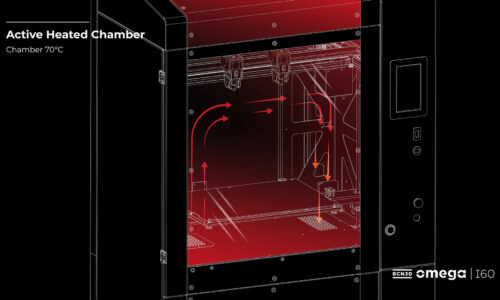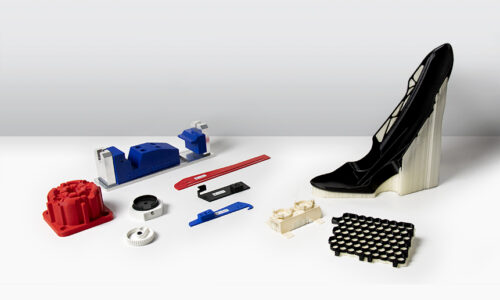Introduction to Fused Filament Fabrication (FFF) 3D printing technology – White Paper
3D Printing Technology, technically acknowledged as Additive Manufacturing (AM) or Rapid Prototyping, is a manufacturing process in which layers of material are built up to create a solid object. There are countless 3D printing technologies, each with its own benefits depending on the application, but this report will focus on Fused Filament Fabrication (FFF) for plastics. The following blog is just a summary of the full White Paper.
Download here the full White Paper >
Introduction to FFF: Fused Filament Fabrication
FFF is an extrusion process where the object is built by depositing melted material layer-by-layer. The plastics used, corresponds to the same thermoplastics that can be found in conventional manufacturing processes, such as ABS or Nylon.
Lately, the introduction of in-house 3D printers has widened access to this technology. FFF led this expansion of desktop 3D printers and nowadays it is the most widespread 3D Printing Technology in the market. This was essentially due to the low initial investment needed, the immense variety of applications offered and the little specific knowledge required to access and use this technology.
How does FFF work?
As previously introduced, FFF consists of an extrusion process of melted plastic. In order to generate the part, a print head travels around the printing surface depositing the material. Here is the FFF fabrication workflow:
• The first stage consists of generating the 3D model with any design software, such as Solidworks, Catia, Rhino or Inventor. The 3D model needs to be exported in STL format.
• File preparation: To configure the model to be printed, it is necessary to use a slicing software where all the printing requirements will be included. This configuration will contain the material selection and the nozzle size of the printer. The software also separates the model into layers and the printing quality, and movement commands can be configured.
• The printing phase is the deposition of the melted plastic.
In-house desktop 3D printers: FFF vs SLA
The most popular 3D printing technologies are FFF and SLA. SLA consists of a liquid photopolymer selectively cured by UV light. Both technologies will be now compared in order to define which are their benefits and disadvantages.
Professional desktop 3D printers compared to industrial printers and outsourcing
Within the FFF technology market, there are different printer categories related to the relation between price and printing quality. In this section, the focus will be the comparison between Professional Desktop Printers and Industrial FFF Printers as well as outsourced production. Should the number of parts to produce is low and the usage is planned to be sporadic, there is the option to outsource the 3D printing service. A 3D printing service bureau is a company or organization that offers this type of services. If the plan is to work in a medium-long term project, the acquisition of 3D printers can considerably reduce costs. This acquisition implies an initial investment, but then the price per part is approximately 30 times cheaper.
Which solution better fits your needs
As explained before, there are many options when choosing how to print the 3D models. It is important to define all the requirements and select which might be the best option. In the following graphs, some important comparing parameters are shown:
In-house FFF printers offer the best combination of costs and lead times. However, investing in both FFF and SLA printing technologies will give your company full versatility when producing parts. Each technology has its own benefits and applications, so the answer to the following questions about your 3D printing needs will be crucial when choosing the best solution for your company.
• What is my budget?
• Does my company have specialized equipment to support the 3D Printer?
• Do I have a need to print out mechanically demanding parts?
• Will there be designing and application versatility?
• How many printed parts does my company required?
• What is the lead time my company requires?
Download here the full White Paper >
Would you like to know more about 3D printing? Check out the following white papers:
• Introduction to FFF technology and its most important parameters
• Anatomy of Sigma & Sigmax R19 extrusion system
Ready to save time and cut costs with a BCN3D printer? Request a customized quotation for a BCN3D Printer.



